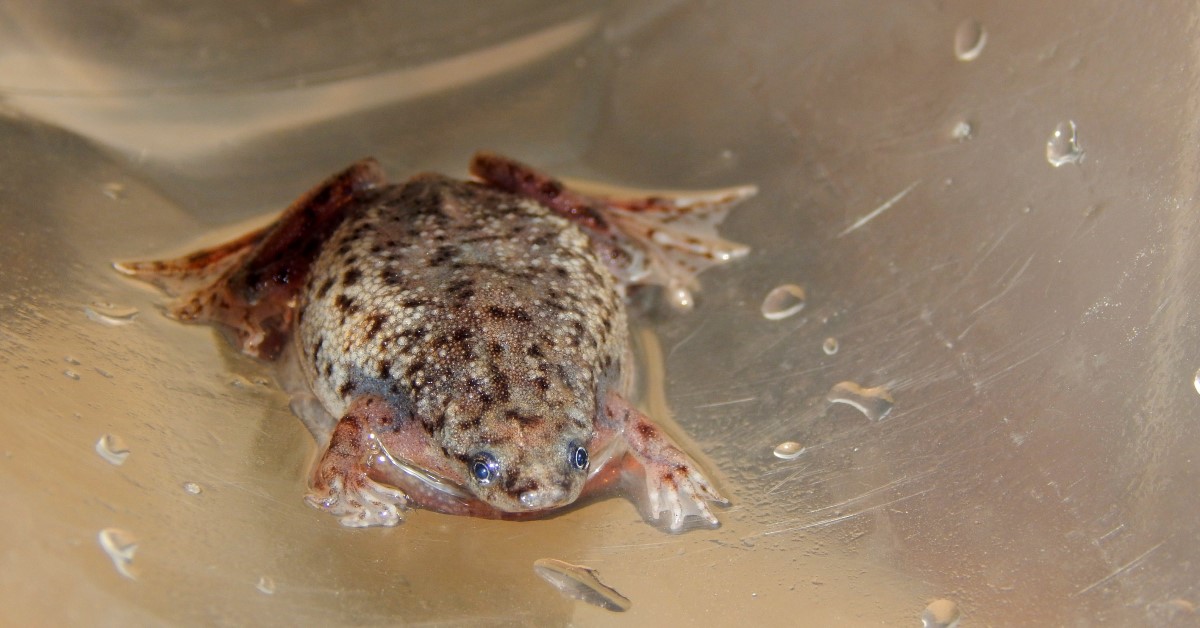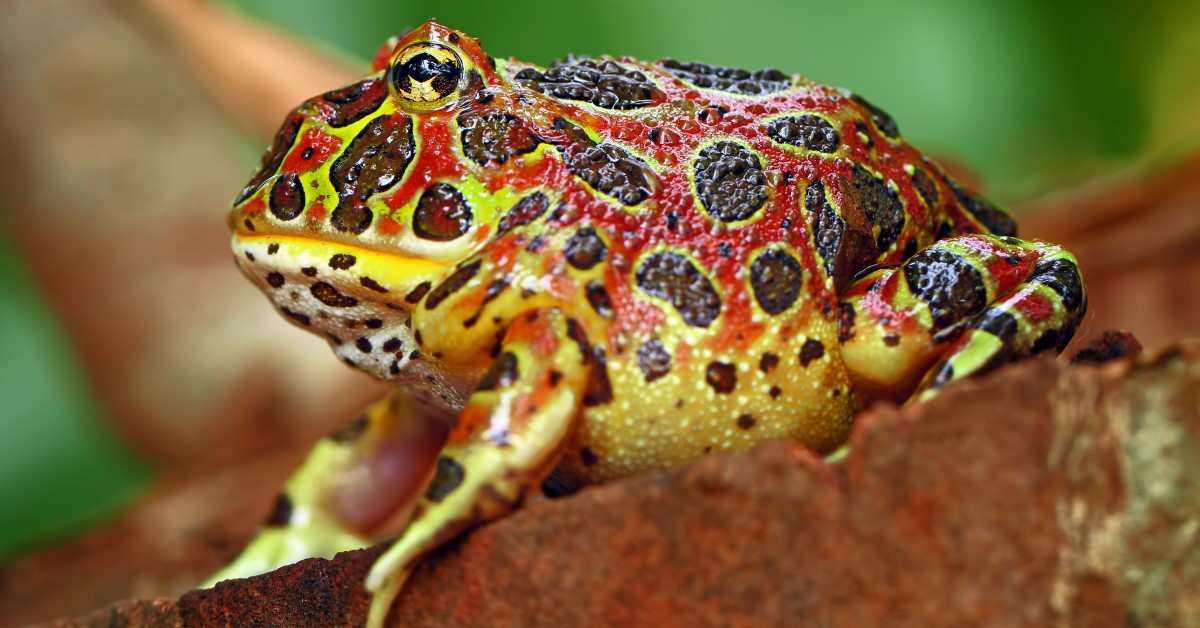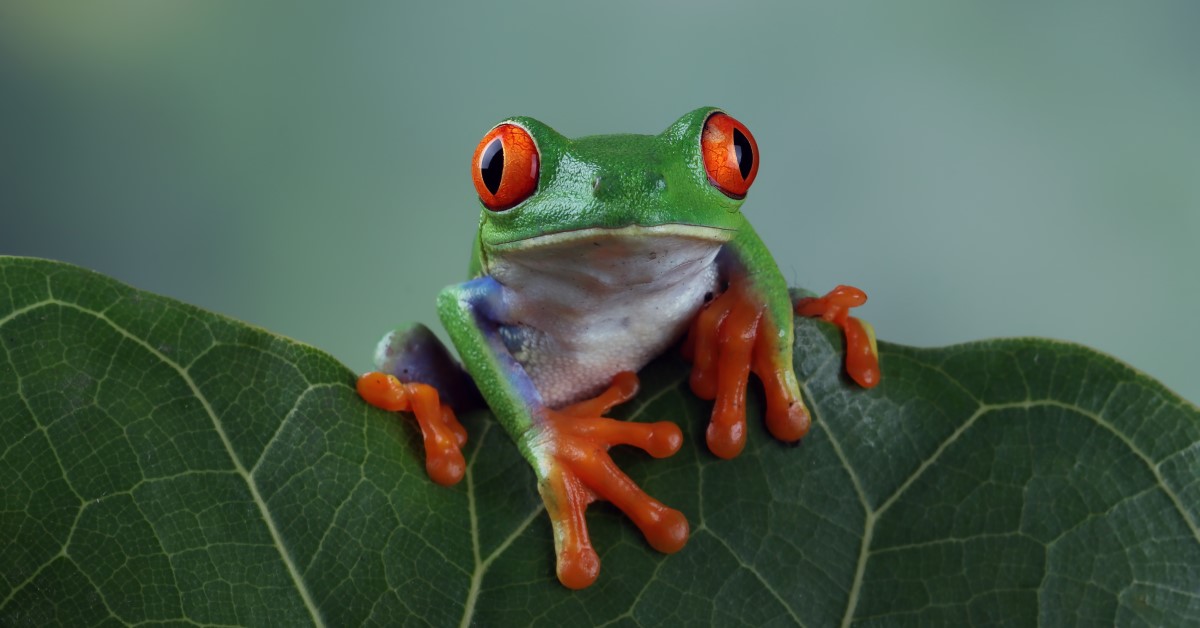African Dwarf Frog Care
African Dwarf Frogs need a small-medium-sized aquarium, adequate filtration, and a balanced diet to remain healthy and active.

Although first discovered in the 1800s, it wasn’t until the late 1970s that African Dwarf Frogs became a staple in the home aquarium. These tiny frogs are entirely aquatic, living all of their lives underwater. With relatively easy care, a small aquarium, and routine maintenance, a pet African Dwarf Frog can provide years of entertainment and companionship. Below, let’s take a closer look at the specialized care these tiny amphibians require.
About the African Dwarf Frog
A better understanding of the African Dwarf Frog can help you give your new pet the best care possible. Ensuring your pet has a suitable environment, and the right food can go a long way to continued success.
In the Wild
These tiny frogs are usually found in the Congo river basin, Nigeria, and Cameroon. Usually, these animals live in shallow ponds or slow-moving rivers. Unlike other frogs, they spend their lives underwater, only coming to the surface for air. The African Dwarf Frog is an omnivore in the wild, eating a combination of insect larvae and plant matter.
Lifespan
African Dwarf Frogs can live a moderately long life with the proper care and a balanced diet. An African Dwarf Frog can live for up to five years in a home aquarium. Much of their lifespan depends on their continued care and the frog’s health at the time of purchase.
Appearance
When it comes to African Dwarf Frogs, the name of the game is camouflage. Much of the frog’s life is spent trying to blend in with the environment. Because these animals usually live at the bottom of ponds or river beds, their color is meant to match the mud and plants. These frogs have a muted brown-green color with some small black spots. The frog’s belly is usually a little lighter and, in some species, can even look silver.
Females are much larger than males and have a more pear-shaped body than a square shape. Males will have glands behind their front legs, whereas females do not. The glands make the stomach region bulge slightly, making it easy to determine the sex of your frog. An adult African Dwarf Frog will only grow to be about three inches from the tip of its nose to the end of its feet.
Habitat
The African Dwarf Frog can be kept in a relatively small aquarium, each frog needs about three to five gallons. These are social animals and do best in groups of three or four. A small group would be perfect in a 15-gallon or 20-gallon tank. Like other tropical fish, make sure the water temperature stays between 72 and 78 degrees Fahrenheit. These little animals like a pH between 6.5 and 7.8 with a water hardness of around 5-10gH. Because these little frogs have to come up to the water’s surface for air, long and low tanks are preferred to deep tanks.
Sand is the best substrate to use, but gravel is acceptable. Always be sure the individual gravel pieces are large enough to prevent your frog from accidentally swallowing the gravel, confusing it for food. Live plants are preferred in the aquarium because they will provide much-needed coverage and protection for your frog and give your frog something to eat. Remember, these animals are omnivores in the wild, so having a balance of meat and vegetation in their diet will keep your frogs healthiest.
Your African Dwarf Frogs will need some filtration to keep their water clean. Because these little frogs aren’t the best swimmers, avoid filtration with extremely strong flow patterns. A sponge filter or a traditional hang on the back filter is suitable. You’ll also need a light to provide about 10 to 12 hours of daylight for your frogs. Keep in mind if your aquarium also has live plants, you’ll need a light powerful enough to support plant growth.
Food
Keeping a well-balanced diet is essential for a long life. In the wild, the African Dwarf Frog eats a mix of plants and insects. These little animals do best with a meaty diet in the home aquarium. You can give your frogs a blend of fish fry, brine shrimp, bloodworms, or earthworms. The African Dwarf Frog is considered an opportunistic feeder in the wild, so there is no need to feed your frogs every day. Giving your frogs a well-balanced meal about three times a week should be enough to keep your frogs happy and healthy. Small treats can be added weekly for enrichment. Suitable treats include small portions of tuna, salmon, or beef heart.
Tank Mates
African Dwarf Frogs are wonderfully social and enjoy the company of other frogs and peaceful tank mates. These frogs are excellent community fish and can add a fun dynamic to any tropical fish aquarium. Some of the best tank makes for African Dwarf Frogs include guppies, corydoras, or peaceful tetras. You can also consider adding small freshwater shrimps or snails to your African Dwarf Frogs tank. Always be sure that any fish or invert added to the tank is large enough to stay away from a hungry, opportunistic frog.
African Dwarf Frogs are lively, social, and entertaining pets. The frogs have a long lifespan and are relatively easy to care for. Expect to get about five years of entertainment from the tiny pet with the proper habitat and diet. Not only are African Dwarf Frogs easy to keep, but they offer a non-allergenic pet that lives in a contained aquarium with a small footprint. If you want to add a new, exciting pet to your home, consider an African Dwarf Frog.
Ready to start saving money on pet wellness care?
Then take a look at Mint Wellness, the pet wellness plan that provides fast reimbursement on routine pet care. Save on vaccinations, wellness exams, preventatives, dental, and more!
Learn More


